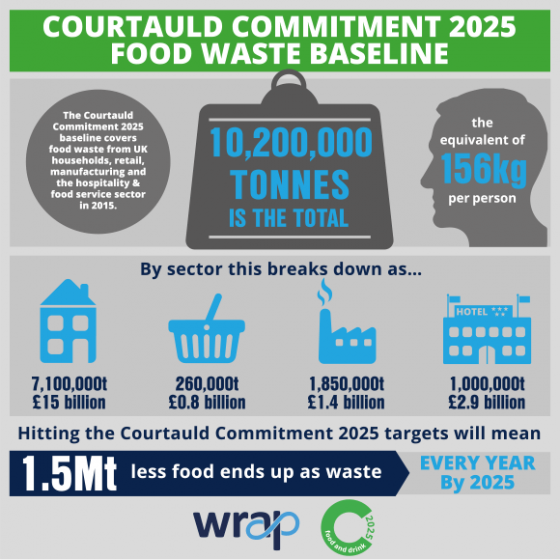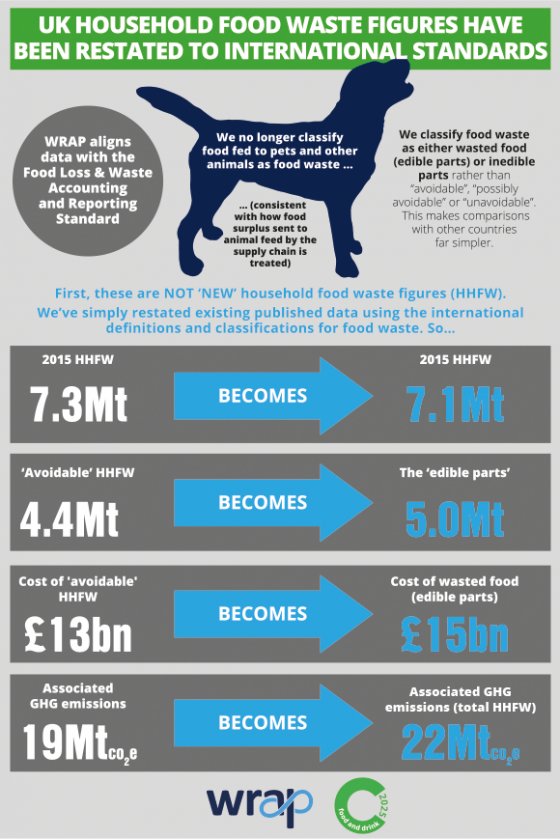WRAP has restated the way UK household food waste is defined and described, to conform to the Food Loss and Waste Standard (FLWS). This coincides with the publication of the Courtauld Commitment 2025 baseline for the year 2015.
For the most up-to-date information on the Courtauld Commitment please refer to: The Courtauld Commitment 2030 Milestone Report 2023.
For the most up-to-date information on household food and drink waste in the United Kingdom, including estimates on quantity and types of waste, reasons for discarding, financial costs, and greenhouse gas emissions, please refer to the Household Food and Drink Waste in the United Kingdom 2021/22.
Key points
- The baseline covers household food waste and data for the supply chain: retail, manufacture and the hospitality & food service sector.
- Total household food waste is now reported as 7.1 million tonnes.
Restating the Household Food Waste figures
Courtauld Commitment 2025 baseline
Figure 1: Courtauld Commitment 2025 baseline graphic

Figure 2: Restated Household Food Waste figures graphic

Download files
-

WRAP-Courtauld Commitment 2025 - baseline report for 2015.pdf
PDF, 807.31 KB
-

WRAP-Household-food-waste-restated-data-2007-2015
PDF, 1.6 MB
By downloading resources you are agreeing to use them according to our terms and conditions.
These files may not be suitable for users of assistive technology.
